A Treasure Trove near Italy's Newest Landing Spot
Plus new Italy tours for October 2024
Hello, readers. Before we get started, I have a couple of quick announcements.
First, I’m happy to announce a fall workshop with illustrator Jenny Kroik, October 6-13th. The two workshops we ran in October 2023 were magical experiences, and we hope you’ll join us.
Our olive and grape harvest tour is also returning this year! The olives come in every other year at Borgo La Pietraia, and we’ll harvest them by hand before seeing them transformed into liquid gold. I can’t wait to host once again this week of fun and deep connection to the earth and sea in Southern Italy.
There has been a lot of buzz about the new Costa d’Amalfi airport in Salerno, which will give travelers another place to land in Southern Italy, right between the Amalfi and Cilento Coasts. (A big thank you to Erica Firpo for including Feast Travel and me in an article about it for AFAR magazine.)
The airport is in an industrial hinterland east of Salerno called Pontecagnano, marked by old factories, farms, and an Etruscan necropolis with over 9,000 tombs. It seems odd that the zone should be so scraggly because it has unfettered access to the glittering Tyrrhenian Sea and the Amalfi Coast. But 5,000 years ago, this was prime real estate, occupied by a large settlement of Etruscans, who are as culturally mysterious in Italy as the Basque are in Spain. From Pontecagnano, they would have been able to trade with people throughout the Mediterranean and their treasures can be seen at an excellent museum just a few miles from the airport, hidden by weeds and wildflowers.
Like so many of the best things in Italy, the Museo Archeologico Nazionale di Pontecagnano doesn’t even have a website. The only person I know who has ever visited was Raffaele, the driver I work with in Cilento, whose company is contracted to bring local kids there on school field trips. He said he’d never seen any other visitors there and was surprised by how well-designed the museum is compared to more famous ones in busy cities.
I felt the same when I visited last October. I left my car in the parking lot of the adjacent grocery store, crossed a weed-choked intersection, and tapped on the museum’s locked glass doors. The woman at the desk was professional and polite as she processed my ticket and gave me a visitor’s map. She was startled by my American accent and astonished I had found the museum. When I had sufficiently explained that locals had told me about it, she yelled to a colleague upstairs to flip on the gallery lights and multimedia display.
The Etruscans have always been firmly identified with central Italy as living between the Tiber and the Arno rivers. Until 1963, when the 9,000 tombs were discovered, the only known connection to southern Italy was that the Etruscan alphabet absorbed letters from the first Greek colonists who arrived in the Bay of Naples and founded settlements on Ischia and Cuma, and later, the city of Naples. For decades, it was believed that Etruscans migrated from Anatolia, but the most recent genetic studies support the idea that the Etruscans were indigenous.
Walking through the galleries, it becomes easy to imagine the Etruscans meeting the colonists in the wild, unspoiled Bay of Naples, eager to sell them gold bracelets and ceramic jars. While their language remains unknowable to scholars, what they believed about the afterlife is clear from how they prepared their tombs to be seen and judged by the guardians of the next life.
The unusual parity of men and women in society is consistent with Etruscan communities in Tuscany and Lazio. While men guarded the home and women tended to it, they shared social status; women were part of the royal and political classes and were known for offering divination. Men and women were both cremated, and children who had not lived to adulthood were inhumed.

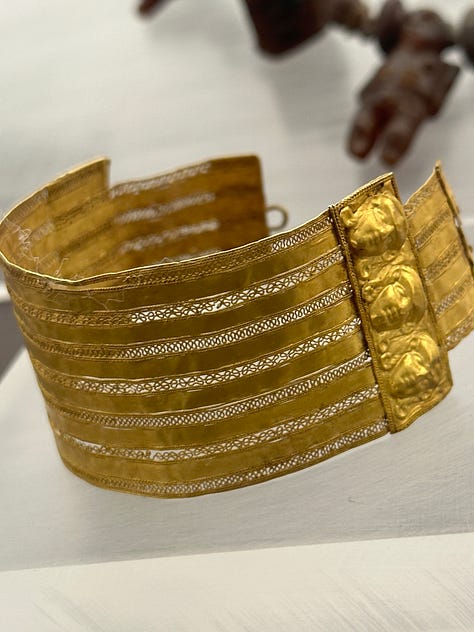
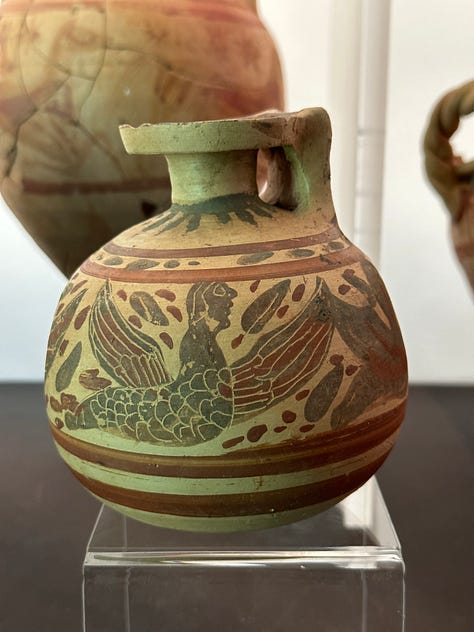
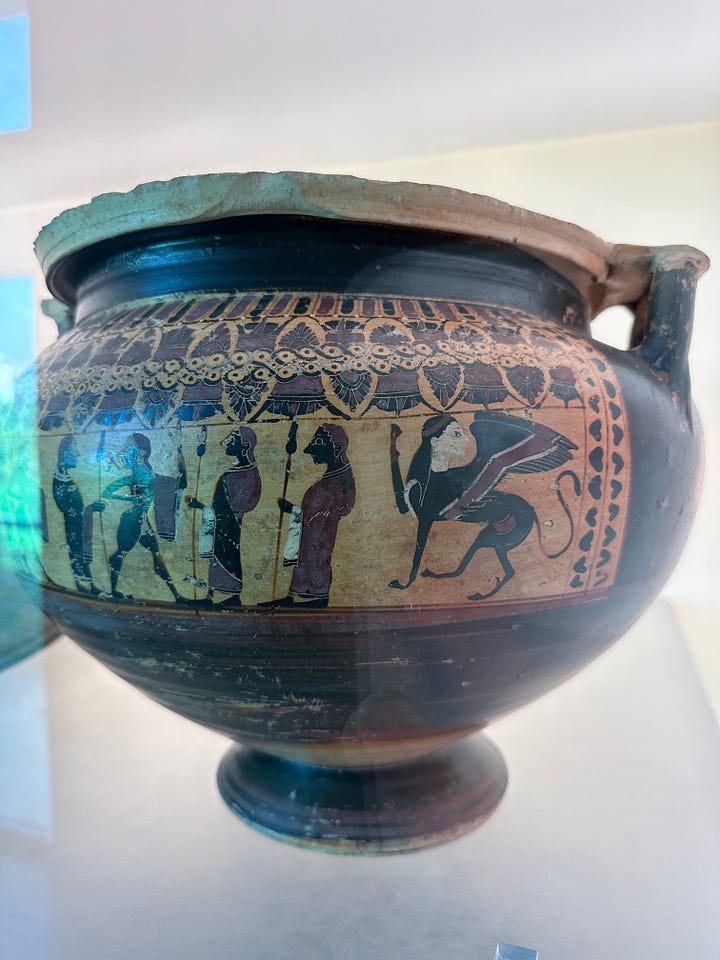
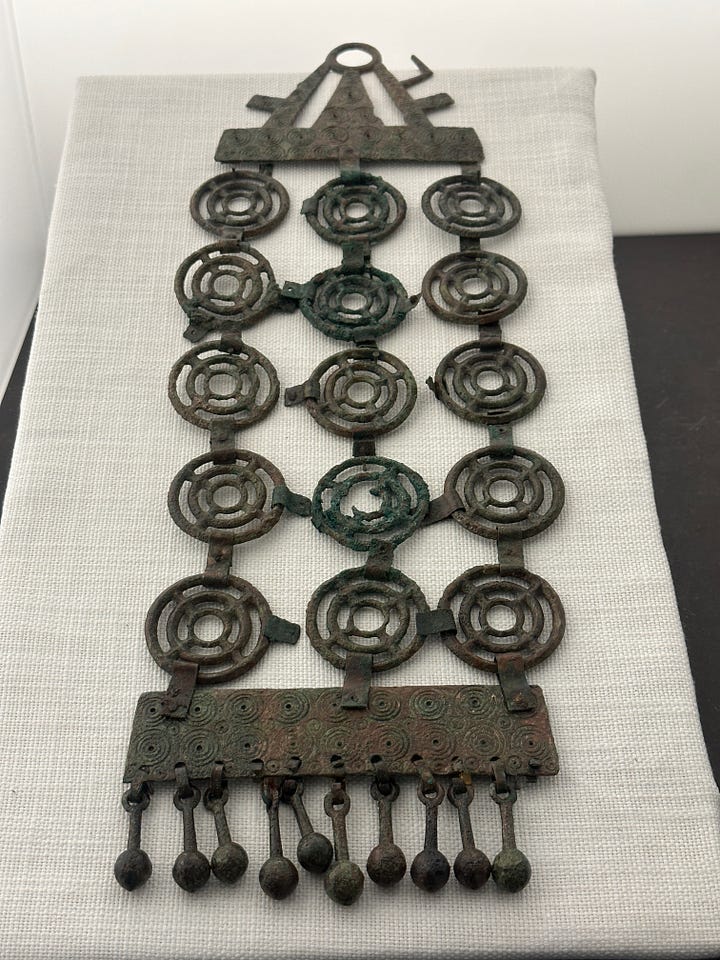
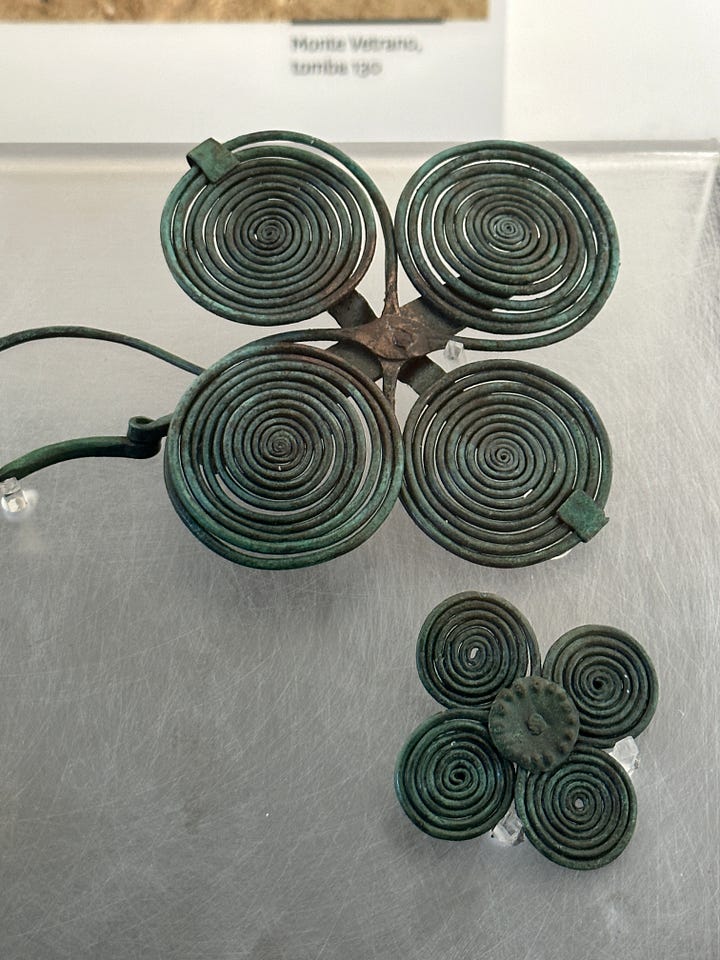
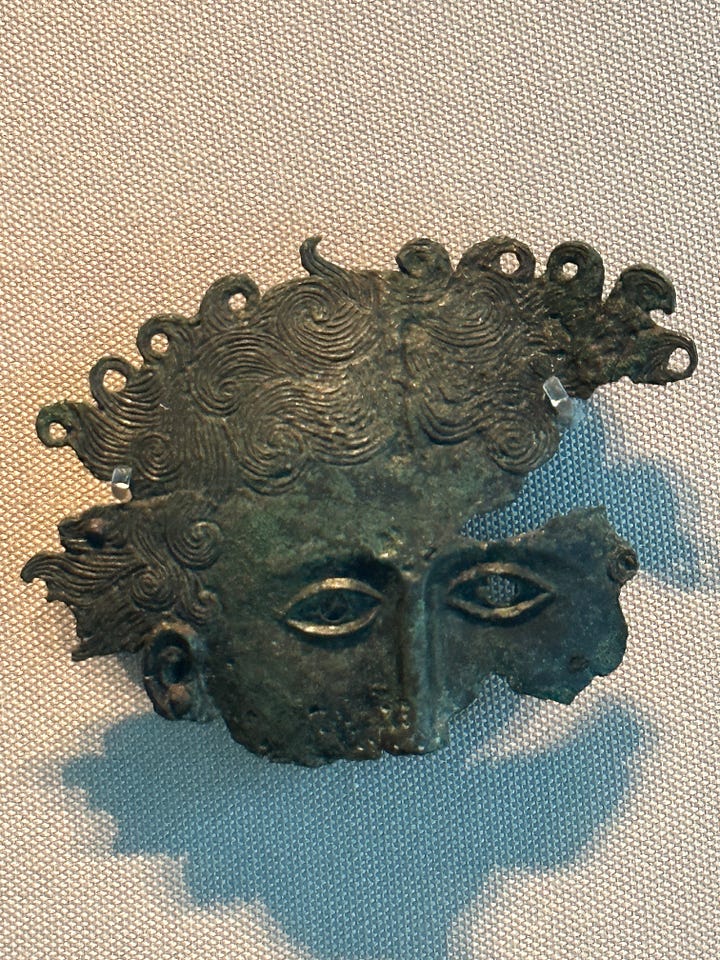
Unfortunately, I don’t think the Costa d’Amalfi airport will bring attention or visitors to the museum. With the much more famous sites of Pompeii and Paestum close by, very few tourists will likely be interested in the cryptic Etruscans. For those interested, all of the museum’s signage is in Italian and English, clearly written by someone with a native speaker's command of English, which is unusual in Italy. However, the museum is another example of how history in Italy is always underfoot, and an infinite number of stories are just waiting to be told. The collection and the ongoing excavations at Pontecagnano are also testimony to the influence of the indigenous tribes of Italy, whose fingerprints are all over modern Italian culture. The Greeks and Romans overran their languages and identities, but their artistry and hope for what comes next are on display for all of us to see.
The opportunity for wonder in Italy is ceaseless.



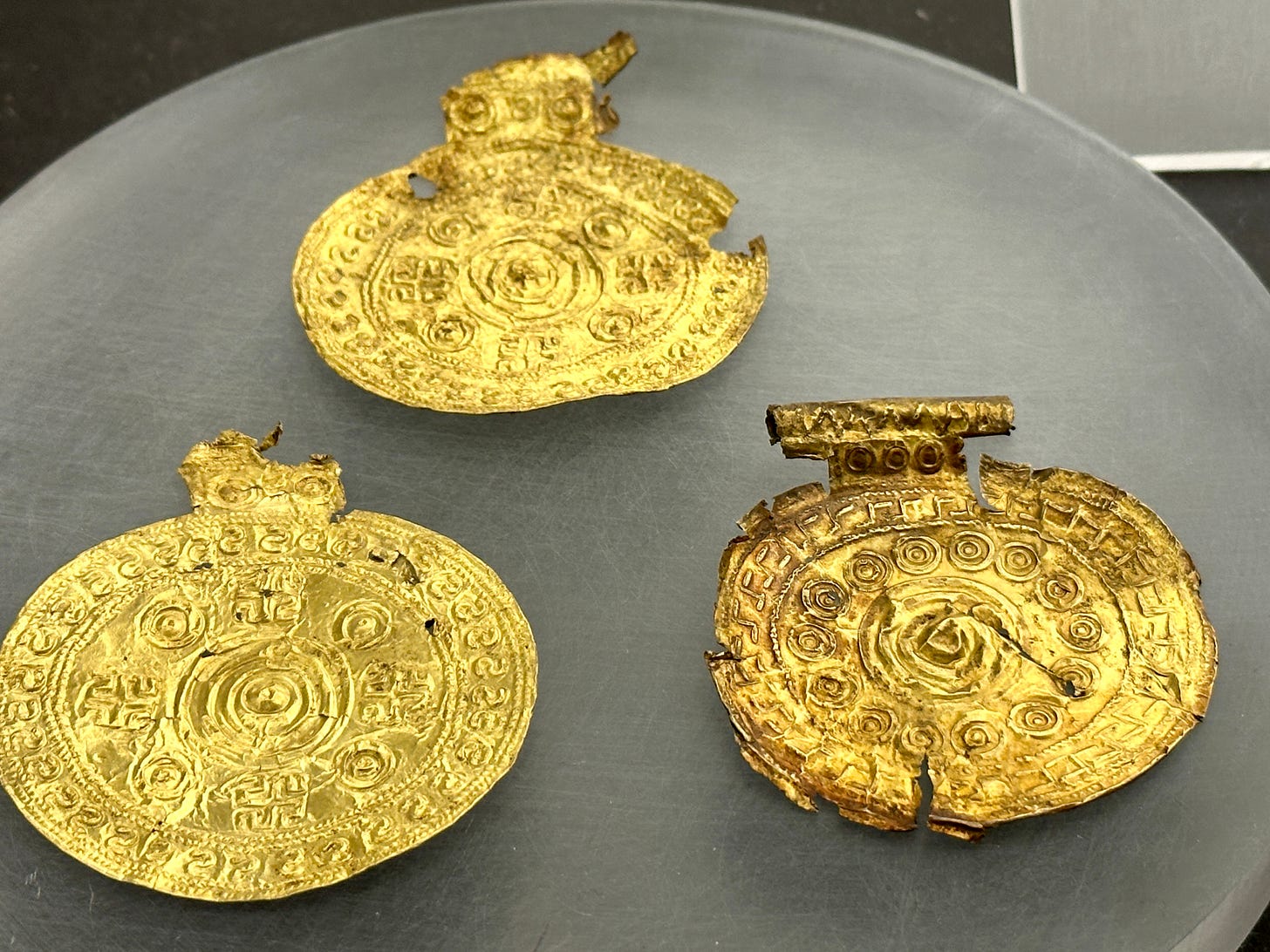
Hadn’t heard yet about the Costiera d’ Amalfi Airport— its great news, though I’m not sure the area needs to do anything to elevate the number of tourists. But the museum sounds right up my alley— I love Etruscan art, and also these not even a blip on the radar places. Love the post!
“The opportunity for wonder in Italy is ceaseless.”
Indeed! I would love to return to the Cilento & now I have another reason to head south!